
TARGET 120411
GO !!!
The making of Yunzi
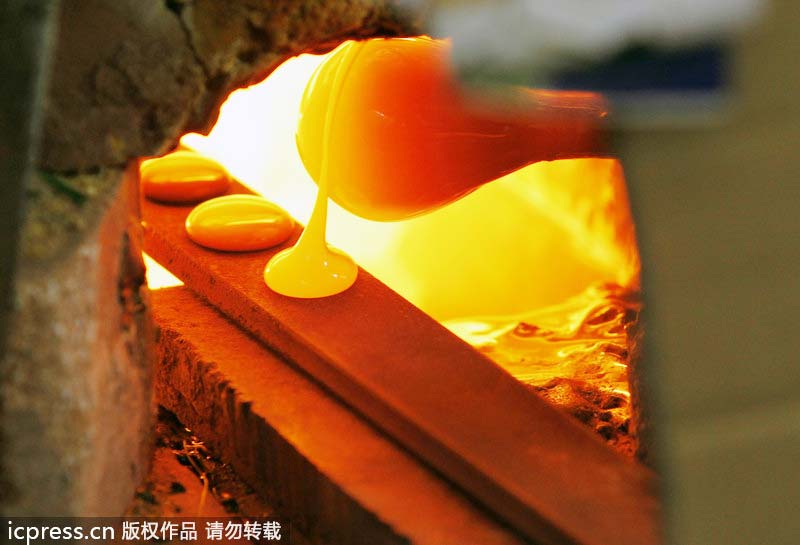
Making a yunzi
NOTE: This will turn out to be a little more confusing feedback page, since many of our viewers will probably not know what a "GO piece" is and few, if any, will recognize the word, "Yunzi".
So, even though the target is >>>the process of manufacturing Go pieces<<< (shown above), a little background information is probably necessary. So, please bear with me while I give information that does not pertain directly to your tasking, but may be found during your session - especially the sessions of the more advanced-level viewers.
The game of Go has often been called "Chinese Chess". It is a deceptively complex 2-person board game where strategy of play can get just as involved as any game of chess.
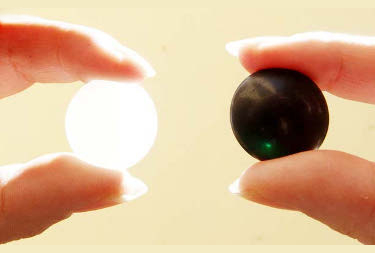
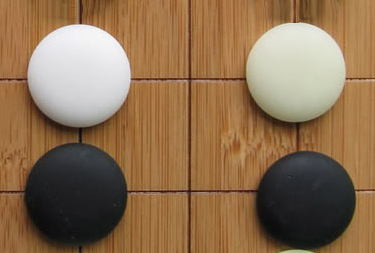
One player plays white pieces and the other player plays black pieces (called "Yunzi"). Unlike chess, the pieces
are all the same. It is played on a wooden board (called a "Go-ban") which has 10 north-south lines and 10 east-west
lines etched into it. The go pieces are played on the crossing points of the lines, not in the open quares.
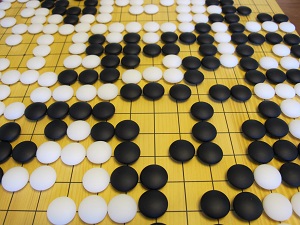
The way to capture a single piece or group of pieces of the opponent's color is to surround it (them) with pieces of
your color. Of course, if while you're doing that, he surrounds the pieces you're using to surround his, then
he captures all of yours. When you "capture" an opponent's piece(s), you can either "kill" them by removing them from
the board, or you can "recruit" them by turning them all to your color. That often results in huge sections of the
board being all your color (as shown in the upper left section of the picture, above). Doing so can either
automatically surround your opponent's pieces, or make it so with a single piece, he can then surround yours.
The game can get very complex very quickly.OK. Background information is over, but there is still a lot of information that will probably be picked up by viewers, even though it may not directly pertain to the manufacturing process. If you do get such information, do not discount it because it is not specifically tasking oriented. It is still target information and should be judged and scored for accuracy.
"Yunzi" are Go pieces manufactured in the Chinese province of Yunnan. Technically "Yunzi" refers only to sintered stones made of "yunzi" material (the exact composition is a secret). But nowadays the term is also used for any Go pieces, whether bought on line from WalMart or from the highest-end manufacturers who make them out of gemstones, with prices beginning at $400 USD per set. (view here) . But the real Yunzi and how they are made is the subject of this tasking.
Every one of the countless billions of Go pieces have been hand-made since the game began, several thousand years ago. They are made by melting a special mixture (the composition of which is secret) in a small oven that has a very small opening through which the worker must perform the process of making the yunzi. In order to perform his/her job, the worker must keep his/her face very close to the opening, resulting in a job of staring closely and directly into a hot furnace all day long.
The temperature in the oven is kept at exactly 1,200 degrees centigrade ( 2192 degrees Fahrenheit). The worker sits in front of the oven with a rod which has a large bulb-like end (not a cup) and a stack of long metal "boards".
He/she places the board into the oven and holds it there until it reaches the right temperature, then dips the bulb-end of the stick into the moltem liquid and places drop after drop of it onto the "board". As you can see from the top picture, this is done with a special turning motion that will insure that every piece is the same size and shape as the other. The board is then left there until any middle peak of liquid blends out into a perfectly smoothly rounded top.
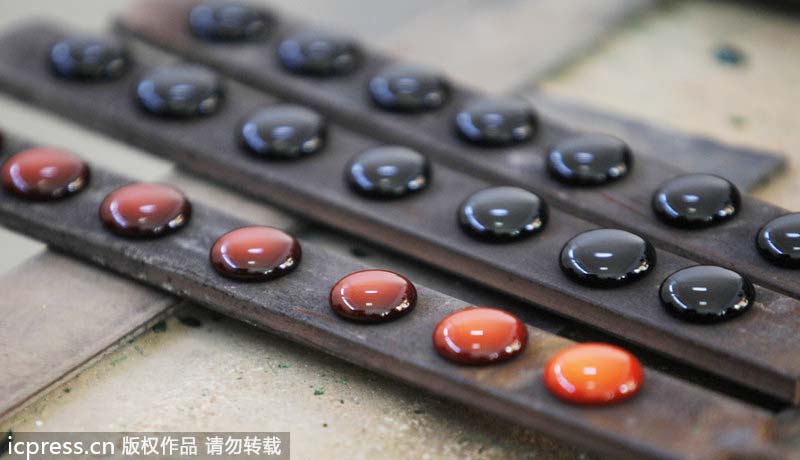
The end result is perfectly rounded Go pieces with a perfectly smooth convex top and a flat bottom.
Yunzi have a thickness of 7 to 9 mm (9/32 to 23/64 inches) and a diameter of 21mm to 22mm (53/64 to 55/64 inches). Black stones are slightly larger to make up for the optical illusion that a white stone looks larger. Both are non-glossy with a matte finish. When Yunzi are held against the light, they will appear dark green or soft white respectively, and show a beautiful translucency.
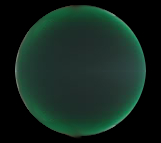
The ancient process of making Yunzi was lost towards the end of the Ming Dynasty. But in 1974, researchers found the formula through chemical analysis of ancient Go pieces, which also allowed for the analysis and re-discovery of the 10-step process needed to make the stones. Now, only Liu Wenfu, a 3rd generation Yunzi heir, has the formula. The same analysis could also be done by others, but since modern manufacturing allows for cheaper, faster, and easier production, other manufacturers do not really care.
In 2009, Yunzi and the production process were listed as a provincial intangible cultural heritage in Yunnan province. The white pieces are made in an ancient style with heavy and smooth lines, and the black pieces look like jade as their edges shine with sunlight almost like clear water in a pool.
According to Chinese law, the yunzi stones can only be produced by the state run Yunzi company. The company creates the yunzi in an old factory that was used by the American Flying Tigers as barracks during World War II which may show up on a viewer's timeline, if the viewer looks into the history of the target) in Kunming, the capital of Yunnan province (see feedback map, below).
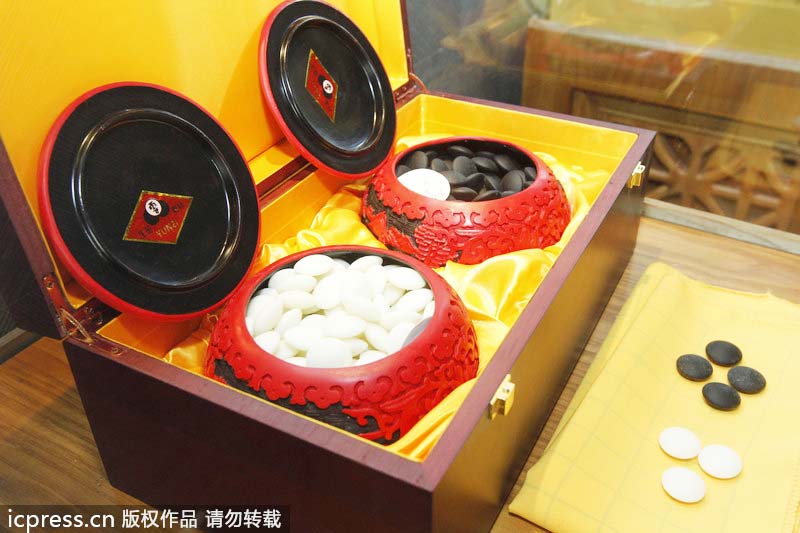
When you buy a Go set from Yunnan, you get a go-ban (board), two bowls (one for white pieces, one for black), 180 white pieces and 181 black pieces, and a case for them.
FEEDBACK MAP
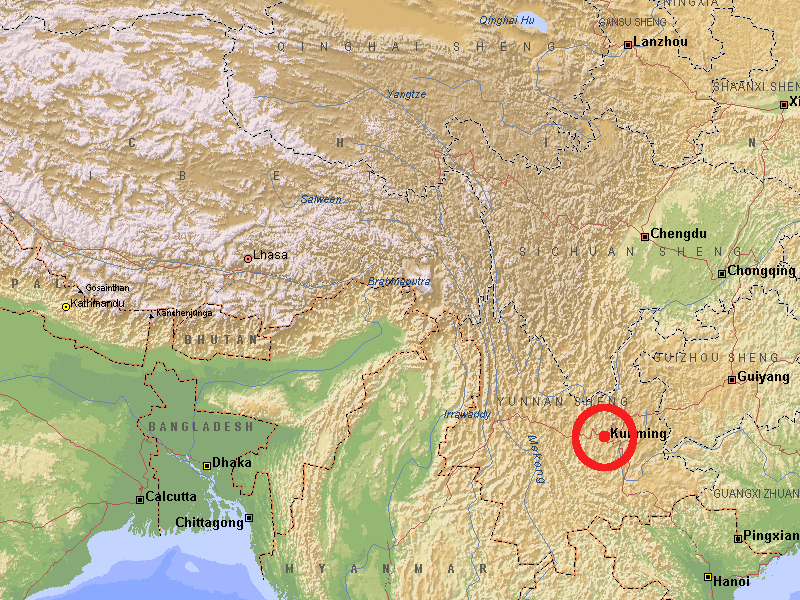
If you got impressions for which this feedback is insufficient, more information,
pictures and videos can be found at the following web sites:
China Daily
Wikipedia (history & definitions)
Senseis (game info)
Place to buy gemstone Go sets
Making your own Go boards & pieces